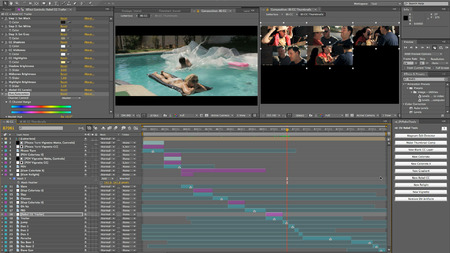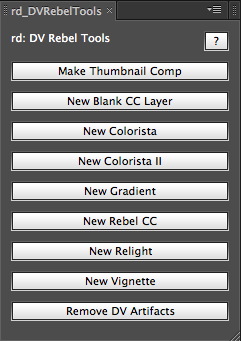People have been asking for me for my thoughts on Jim Cameron’s recent presentation at CinemaCon stating that “the future of cinema” is higher frame rates. I haven’t felt the need, really, since I’ve been mouthing off here about how much I love good, old-fashioned 24p for years. I’ve even gone to pains to try to explain why I like it, and why I think others do. Maybe the best example of this is the interview I did with MacVideo last year, but I’ll link to more at the end.
Now it’s been announced that Peter Jackson’s 3D production of The Hobbit will be shot at 48 fps. Maybe it’s time to say something.
I find the notion odd that “the future of cinema” is the recent past of video. Whether it’s 60 fps or 48 (which is close to PAL video’s 50 fields per second), we’ve seen these frame rates before. And audiences have rejected them to varying degrees for as long as I can remember, dating back to my childhood, when my mother would skip over perfectly good BBC dramas because they “looked like soap operas.” No one cared about Showscan, and no one wanted to watch a movie shot on video until 24p came along (unless it had been converted to 24p using something like Filmlook or Magic Bullet). That anyone thinks a movie shot at 60 fps is going to look any different than a well-lit reality TV show is confounding to me.
Still, if James Cameron and Peter Jackson, whose films are hugely influential to me, want to experiment with higher frame rates, I’m happy for them to have the freedom to do so. In the same way that I don’t want my TV set changing the frame rate of the movies I love, I would never dream of telling a filmmaker that they shouldn’t try something about which they are creatively excited.
There’s a big difference between Jim Cameron, who is a filmmaker, choosing a frame rate that he feels is appropriate for his movies, and anyone telling anyone else what frame rate they should shoot. Roger Ebert, I love ya man, but your job is reacting to movies, not dictating their technical specifications.
Still, speaking only for myself, I’m disappointed. When I was growing up and learning filmmaking, Jim Cameron could always be relied on to use technology to push filmmaking forward. Now, I fear that he’s using filmmaking to push technology forward.
Lest the glibness of that remark drown out my meaning, let me explain. Cameron has left a trail of technology improvements in the wake of his films. People couldn’t talk to each other underwater until he made The Abyss. On his budget-conscious Terminator, he drafted the plans for the metal exoskeleton himself. He used his fluency with tech to make his movies better.
But now it’s the other way around, His highly-developed abilities as a writer/director are fooling people into thinking that his technology initiatives are important for all of cinema. Avatar is a great movie. So enjoyable that it left some people thinking, “performance capture is the future!” Or “3D is the future!”
The truth is, Avatar is good because the filmmaking is good. To draw any conclusions about production technologies in general from its success would be akin to suggesting that “Super 16 is the future!” after The Hurt Locker won best picture, or that the tremendous box office of Toy Story 3 means that all films should be animated.
I have no doubt that Avatar 2 will be a good movie. Jim Cameron doesn’t know how to make anything else. What I’m concerned about is that people will attribute their enjoyment of it to 3D and high frame rates, rather than Cameron’s unparalleled skills as a filmmaker.
And then I’ll find myself sitting in some executive’s office trying to explain why I don’t want to shoot their movie at 60 frames per second 3D, instead of just explaining why I don’t want to shoot it in 3D.
See also:
Slumdog Millionaire, Feb 23 2009
Less is More, March 18 2006
Canon Adds 24p to the 5D Mark II and I Blame You, March 1 2010
MacVideo Interview, the part about 24p, Feb 22 2010
Seven Fetishists and Why They Should Relax, July 8 2010
 Wednesday, April 13, 2011 at 6:42PM
Wednesday, April 13, 2011 at 6:42PM 













